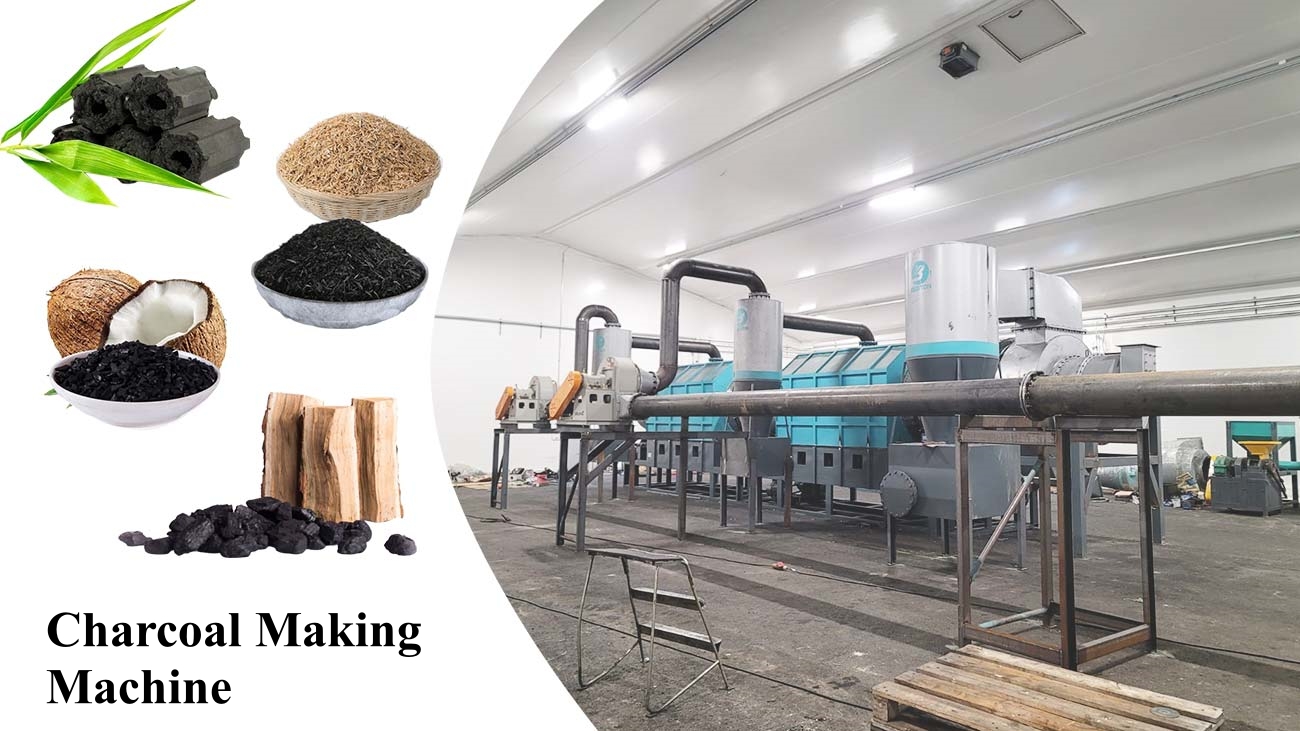How about Potential of Biomass Pyrolysis for Sustainable Energy Production?
In the realm of renewable energy, biomass pyrolysis emerges as a promising avenue, offering a pathway towards sustainable energy production. This innovative process involves the thermal decomposition of organic materials at elevated temperatures in the absence of oxygen, yielding valuable byproducts such as biochar, bio-oil, and syngas. At the heart of this transformative technology lies the biomass pyrolysis plant, a sophisticated facility designed to harness the latent energy stored within various biomass feedstocks.
Operational Mechanisms
Biomass pyrolysis plant operate on the principle of controlled thermal degradation, where biomass undergoes a series of complex chemical reactions to produce a range of useful end products. The process begins with the feeding of raw biomass into a reactor chamber, where it is subjected to intense heat in an oxygen-starved environment. This controlled environment prevents combustion, allowing for the efficient conversion of biomass into valuable intermediates.

Valuable End Products
The cornerstone of biomass pyrolysis lies in its ability to generate a trifecta of valuable end products: biochar, bio-oil, and syngas. Biochar, a carbon-rich residue, serves as a potent soil amendment, enhancing soil fertility and sequestering carbon for long-term environmental benefit. Bio-oil, a versatile liquid fuel, finds applications in heating, electricity generation, and biofuel production, offering a renewable alternative to traditional fossil fuels. Meanwhile, syngas, a gaseous mixture of hydrogen and carbon monoxide, serves as a precursor for various industrial processes, including the synthesis of chemicals and fuels.

Feedstock Flexibility
The versatility of biomass pyrolysis extends beyond its product spectrum to encompass a wide range of feedstock options. From agricultural residues and forestry waste to dedicated energy crops and organic municipal solid waste, virtually any organic material can serve as a viable feedstock for biomass pyrolysis. This inherent flexibility not only mitigates waste disposal challenges but also fosters regional self-sufficiency in energy production, reducing reliance on finite fossil fuel reserves.
Environmental Benefits
Furthermore, biomass carbonization machine offers a sustainable solution to the issue of biomass residue management. By converting organic waste streams into value-added products, biomass pyrolysis plants help alleviate environmental burdens associated with landfilling and open burning, thereby mitigating air and water pollution while simultaneously reducing greenhouse gas emissions. This holistic approach to waste management underscores the environmental and social benefits of embracing biomass pyrolysis as a cornerstone of the circular economy.
Integration and Challenges
The integration of biomass pyrolysis into the broader energy landscape holds immense promise for advancing sustainable development goals. By providing a renewable source of energy and valuable co-products, biomass pyrolysis plants contribute to energy security, economic growth, and environmental stewardship. Moreover, the decentralized nature of biomass pyrolysis facilitates community-based energy projects, empowering local stakeholders and fostering resilience in the face of global energy transitions.
Despite its numerous advantages, biomass pyrolysis is not without its challenges. Technical hurdles such as reactor design optimization, feedstock variability, and product upgrading pose ongoing research and development challenges. Moreover, economic factors such as capital costs, feedstock availability, and market demand influence the commercial viability of biomass pyrolysis ventures. Addressing these barriers requires concerted efforts from policymakers, industry stakeholders, and the research community to foster innovation and scale up biomass pyrolysis technologies.

Conclusion
In conclusion, biomass pyrolysis plant holds immense promise as a sustainable solution for energy production and waste management. Through the conversion of organic materials into valuable end products, biomass pyrolysis plants offer a pathway towards a more resilient, circular economy. By harnessing the latent energy stored within biomass feedstocks, biomass pyrolysis stands poised to play a pivotal role in shaping the future of renewable energy and sustainable development.